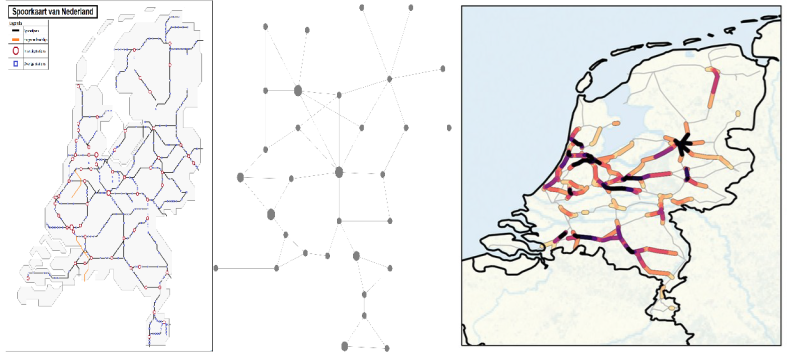Mathematician Bert Zwart of the Dutch National Research Institute for Mathematics and Computer Science (CWI) and his colleagues, Tomasso Nesti (CWI) and Fiona Sloothaak (Eindhoven University of Technology) have now proposed a new explanation on how large electric power blackouts can occur.

Photo by Matthew Henry on Unsplash.
It has been observed by scientists that the total blackout size, measured in terms of number of customers affected and denoted by  , is scale-free, meaning there exist constants
, is scale-free, meaning there exist constants  such that
such that
\begin{equation}\label{equation}P(S>x) \approx Cx^{-\alpha},\end{equation}
where  means that the ratio of the term on the left and of the term on the right tends to one as
means that the ratio of the term on the left and of the term on the right tends to one as  grows. We also say that the total blackout size follows a power-law distribution.
grows. We also say that the total blackout size follows a power-law distribution.
In a very recent publication the authors propose a radically different and much simpler explanation than the aforementioned suggestions on why the relation in (1) occurs. Their central hypothesis is that (1) is inherited from a similar law for the distribution of city sizes.
In a short article on Physics, an online magazine from the American Physical Society we read very interestingly:
"They point out that city sizes in any region tend also to have a power-law size distribution, and they say that this distribution might create the same statistics for electricity blackouts.
That’s not as obvious as it might sound. If cities produced all their own power locally, their heavy-tailed size distribution wouldn’t matter; outages would stay localized. Failure only spreads if a significant fraction of a city’s power is actually generated elsewhere, says Zwart."
But why is this insight radically different?
Previous studies trying to explain (1) suggest this scale-free behavior may occur as a consequence of self-organized criticality (SOC). SOC is a term used in physics to describe a class of systems exhibiting criticality in a dynamically generated, i.e., spontaneous way.
In the recent article the authors present their analysis which illustrates how heavy-tailed city sizes cause heavy-tailed blackout sizes.
More details on this modern line of research can be read in the recent article the authors published in Physics Review Letters (ArXiv), or in a short communication on the website of the CWI and one on the website of Physics.






